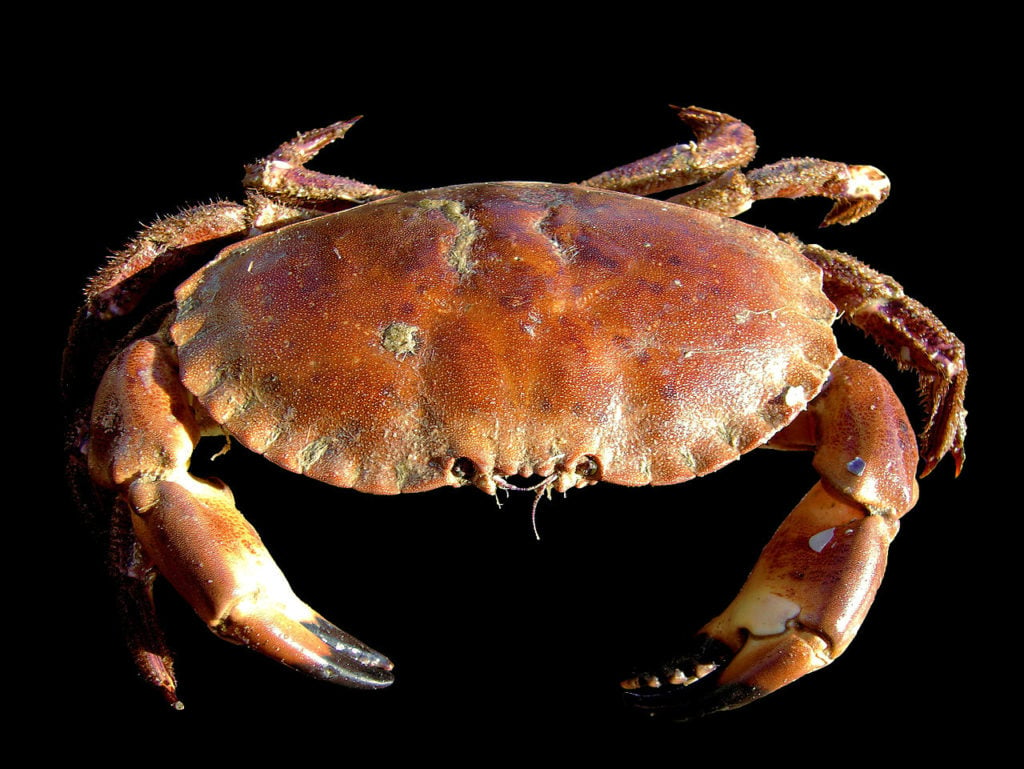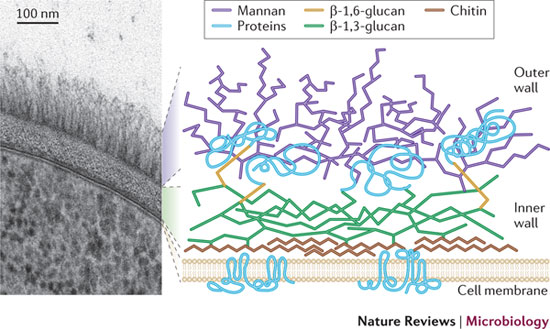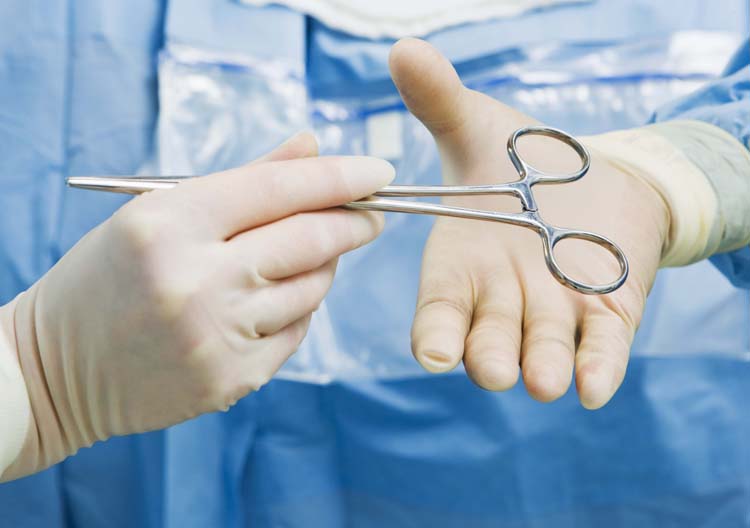Researchers have developed an antimicrobial ‘cloak’ which could play a key role in helping to protect us from the build-up of dangerous microbial biofilms.
In their paper published on the 5th of December in Scientific Reports the team found that an agar hydrogel, containing graphene-oxide and laser printed to mimic the shell surface of the Cancer pagurus crab, acts to lower growth of gram-positive and gram-negative bacteria, and fungal cells.
Biofilms, a layer of microorganisms growing on a surface, can be a massive risk to our health, especially on medical devices like scalpels and catheters. Normally we use things like antimicrobials, silver or titanium to remove this layer of growth but for these to be effective over longer periods we need to keep re-applying them, which over time can have a cumulative toxic effect on our cells. If we want to find a way around this, the main obstacles to overcome are to design a new substance which is cheap, can be applied over large and uneven surfaces and which is less toxic than these existing biofilm deterrents.
The idea of the team’s research was to try and create such a substance by combining two antimicrobial properties – those of graphene oxide and the surface features of certain animals.
Graphene oxide is a compound with proven antimicrobial action. Its main method of killing microbes is by slicing through their membrane, causing their cellular contents to leak out and leading to cell death. It also has several advantages, such as low cost and easy large-scale production, and is environmentally friendly.
Several animals, such as the Cancer pagurus crab, have evolved an interesting defense against microbial infection. This crab has developed a shell where the outer surface, or the carapace, is shaped in a way which makes it much harder for microbes to grow.

The problem with using these on their own is that it would be extremely hard to apply them to the irregular surface of medical tools.
To get around this, the team embedded residues of graphene oxide into an agar gel. They then used a laser to shape the gel and replicate the same wrinkled surface that Cancer pagurus has on its shell surface.
So how effective is the antimicrobial activity of this agar hydrogel? The team first set out to see how the hydrogel affected the growth of three different organisms – Staphylococcus aureus, Escherichia coli (gram-positive and gram-negative bacteria, respectively), and the fungus Candida albicans. To check this, they grew the organisms on four types of surface: plain agar, agar shaped to mimic the crab’s carapace, agar with embedded graphene oxide and the agar hydrogel itself.
They found that both the agar shaped to resemble the carapace and the agar containing graphene oxide reduced the growth of all organisms by about 10% as compared to the plain agar. But when the agar was both shaped to mimic the carapace and contained graphene oxide, this reduction of growth was much more prominent. The growth of S. aureus was reduced by as much as 53%, E. coli by 40% and C. albicans by 30%.
The colonies of the organisms that were able to grow were also significantly smaller on the agar hydrogel, with S. aureus colonies reduced by 70%, E. coli by 65% and C. albicans’ colonies decreased by 45%.
The researchers also tested the degree of damage caused to the organisms by measuring the amount of nucleic acids released. They found that both bacteria showed a much higher amount of nucleic acid leakage when grown on the agar hydrogel, suggesting that the graphene oxide residues are able to efficiently slice open the bacterial cells. However, C. albicans didn’t show any significant amount of nucleic acid release.
Why does C. albicans seem more resistant to the graphene oxide? The answer could lie in the thicker nature of its cell wall, which is able to protect it from the worst of the compound’s cutting action. The S. aureus is clearly the most affected by the agar hydrogel – according to the paper, this could be down to the lack of an outer membrane in this organism, which puts it right at the mercy of the graphene oxide’s ‘nano-blade effect’. E. coli on the other hand does have this outer membrane layer, giving it slightly more protection.

The mimicry of the crab’s carapace shape was shown to play a crucial role in affecting the growth of the organisms – even for C. albicans. The researchers were able to see that the wrinkles of the hydrogel caused a collapse of cell structure, which could in turn lead to reduced growth and disrupt their metabolism (which can lead to severe knock-on consequences).
So how could the research this team carried out be useful? With microbial biofilms on medical equipment representing a significant threat to the health of the patients they’re intended to treat, finding a way to deal with these growths is essential. The methods we use at the moment are limited, both in terms of the need for frequent re-application and the risk of damage to our own cells. Using antimicrobials to clear biofilms is dangerous because of the risk of developing resistance development. The hydrogel ‘cloak’ which has been researched here has a bunch of advantages – it’s relatively cheap and has low toxicity towards our cells. This study demonstrated that it’s active against a range of organism types, able to affect the growth of gram-positive and gram-negative bacteria and fungi. An important benefit is that the hydrogel has nothing to do with antimicrobials but essentially works on a ‘mechanical’ basis, meaning that it mainly affects the structure of the organisms. In terms of resistance, this means that the organisms are much less likely to find a way to get around this method of attack. With huge potential benefits in the medical world, especially in the treatment of immunocompromised patients, this is a new development that’s definitely worth keeping an eye out for.
